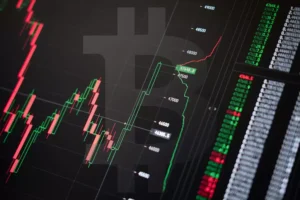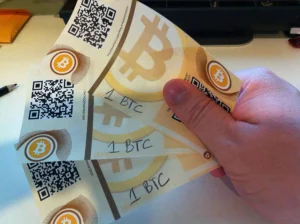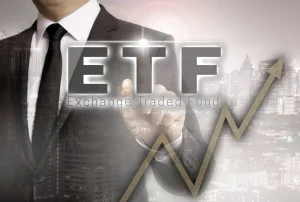In some digital trading markets, there are mechanisms that prevent prices from going too far off course. One example is the funding rate, a small, time-based fee exchanged between traders holding opposite positions. When some expect prices to rise while others anticipate a drop, the crypto funding rates adjust based on which side holds more weight. In this article, we’ll take a closer look at how this system works and why it plays an important role in crypto trading.
What is the Funding Rate?
The funding rate plays an influential role in modern crypto futures trading. These are routine charge exchanges between traders: some expecting values to climb, others bracing for a downturn. The purpose of the fee is to maintain the price of a perpetual contract at or near the actual value of the underlying currency.
These micro-payments take place several times daily and show which side of the market is pressing harder. The rate moves with distinct behavior. It surges during emotional swings and goes down when balance returns. Also, it reflects emerging crowd bias, signals where market pressure is concentrated, and suggests how traders might reposition.
Imagine a contract linked to Bitcoin trading at $62,500, while the spot market price sits at $62,000. The $500 gap suggests that more traders are betting on a price increase. To balance this bias, the system imposes a small fee on those holding long positions. This mechanism is designed to prevent excessive pressure from building in one direction.
If you have a $50,000 position and expect the price to rise, you’d pay a funding fee every eight hours. If the rate is 0.01%, you’d pay $5 at each interval. The fee is passed along to those betting the other way.
Now, if more traders start expecting a price drop, the contract might trade below the market price. When it happens, the fee switches direction. Those betting on falling prices begin paying those who think prices will go up.


Turnkey Brokerage Solution For Your Business
Get the most profitable fully licensed fx/crypto brokerage software or ready-to-operate business in 48 hours. Best-in-class web & mobile trading platforms, sales-driven CRM, full integration with MT4/5, and 150+ payment providers.
How Funding Rates Work?
Crypto funding rates are a tiny sum that moves between tokenholders. If one side, those betting on a rise, for instance, starts to take over, they may have to pay those on the other side. It keeps things from tipping too far in one direction.
The fee isn’t made up on the spot. It comes from three things: the cost of borrowing money, how far the contract price drifts from the real price, and how often the payment happens, usually every few hours. Whenever the price goes too far from the real one, the fee goes in and slowly pulls it back.
So, when many people believe prices will rise, the system reacts: It makes it more expensive to hold that view. And when many expect prices to fall, it does the opposite: It becomes harder to keep betting on that outcome.
There is a simple rule: everything should be more or less balanced. For stability, the system depends on mathematical principles and numbers. If this isn’t the case, prices change and don’t fairly represent their true value. It creates risks and confusion.

What Shapes the Funding Rate in Crypto
These percentages change depending on a number of important factors. Let’s examine a few of them:
- Interest rate disparities. When crypto lending and regular bank rates vary, the gap creates pressure on funding calculations. For example, if your savings account offers 2% while crypto platforms give 8%, the difference pushes funding adjustments.
- Sudden price swings. When the value of cryptocurrencies rises or falls sharply, the rate shifts to prevent an overload of traders on one side of the market.
- Funding rates also react to trading behavior. If a large number of participants start favoring long positions in a particular asset, the rate increases to reduce the imbalance.
By staying alert to interest rate decisions and overseeing order flow, traders can spot early signals and make cost-effective decisions about their buy and sell orders. Over time, funding fees can be drastically lowered.
The Impact of Funding Rates on Trading Strategies
One of the things that goes on behind the scenes is crypto funding rates, which may either reduce your earnings or, if properly timed, unexpectedly increase them. Your position in the market and the timing of your move will determine whether they operate in your favor or against you. Let’s now examine the impact of the rates:
- Cost accumulation. Long positions during high positive funding periods face increasing expenses. A trader holding Bitcoin perpetuals at 0.1% hourly funding pays 2.4% daily just to keep their stance.
- Strategic positioning adjustments. Sharp traders switch between upward and downward trades depending on how the funding fees are shifting. When rates favor shorts, they capitalize as they take contrarian positions while collecting payments from over-leveraged bulls.
- Arbitrage opportunities. When the value of perpetual futures contracts differs from the real price, traders can profit quickly. They buy the coin at the lower spot price while betting against the inflated contract, locking in the gap as profit.
For trading to be successful, it is important to look not only at where the price is going. Other costs must also be considered. If you do not do this, you can lose more than you expect. Before opening a trade, consider whether the size of your position is suitable for the situation. And if something changes, it is better to adjust it in time.
Understanding the Risks of Funding Rates
Funding rates pose genuine dangers that traders must acknowledge before exploring perpetual contracts. These insignificant percentages might transform profitable trades into costly disasters. Your position might appear secure today, yet tomorrow’s funding calculations could drain your account balance through accumulated charges.
Sudden rate escalations represent the most significant threat. You can hold a leveraged Ethereum position when funding jumps from 0.01% to 0.5% within hours; your holding costs multiply dramatically. High leverage magnifies these dangers exponentially; it turns tiny funding adjustments into margin call triggers. If you use 10x leverage, any funding fees are also ten times bigger. If the market volatility is on, those extra costs add up and might force your position to close automatically.
The market does not stand still. You can easily lose money if you do not monitor how financial conditions change. It is not always immediately visible. For example, when the price of Bitcoin fluctuates, the fee for maintaining a position can exceed 1% per day. And if you have a large lever, the costs grow quickly.
Experienced traders do not ignore these things. They watch how the rate changes and change their plan in time. They do not play randomly.
To trade wisely, you need to take the crypto funding rates seriously. It is as critical a part of the costs as anything else. If you follow the numbers, do not risk too much, and choose positions wisely, you can avoid significant losses and work more stably in the long run.






